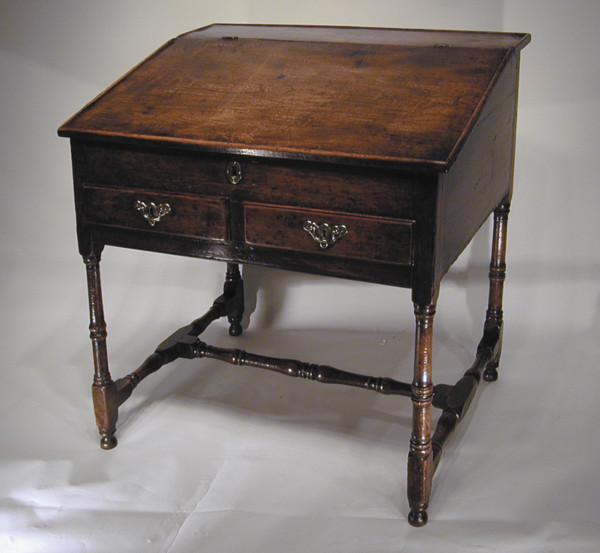Before William Caxton’s (1420-1492) Printing Press appeared in England, purpose-made furniture directly associated with writing was virtually unknown. Writing was undertaken on a raised surface, simple table or lap, and confined mainly to ecclesiastical subjects written by monks on parchment.
Then with the rapid development of printing and interest in the written word in England, simple book containers began to emerge. Firstly in the form of coffers for household storage before the ‘bible box’ emerged; a simple oak box with a hinged lid usually with a secure iron lock, as printed items were extremely rare and valuable.
These simple ‘bible boxes’ evolved – painted, decorated and carved, sometimes even dated. I have not come across any with a date genuinely earlier than 1603, but I have no doubt there are some rare earlier examples in existence. Perhaps someone out there has one?
[fusion_builder_container hundred_percent=”yes” overflow=”visible”][fusion_builder_row][fusion_builder_column type=”1_1″ background_position=”left top” background_color=”” border_size=”” border_color=”” border_style=”solid” spacing=”yes” background_image=”” background_repeat=”no-repeat” padding=”” margin_top=”0px” margin_bottom=”0px” class=”” id=”” animation_type=”” animation_speed=”0.3″ animation_direction=”left” hide_on_mobile=”no” center_content=”no” min_height=”none”]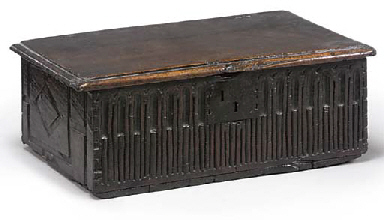
In time the square bible box acquired a sloping lid with an applied book rest. This box would have been carried from place to place, and within a few years would be supported on legs in keeping with contemporary styles. Soon a working drawer was incorporated, below and within the box, with compartments for quills, ink, sand, candles etc. The earliest examples of boxes on legs were in two pieces, only later to become united.
In the late 17th century the stand was gradually replaced by a chest of drawers, at this stage still separate units, with the box simply held in place within a moulding. Later on the bureau (as we would recognize it today) gradually appeared, having largely discarded its legs and stand by the early part of the 18th century.
The escritoire (or ‘scrutoire’) was also born – a chest of drawers with a writing section above, the hinged fall front revealing a writing surface with many small, often secret, drawers above, with a convex ‘bible drawer’ now concealed in the cornice. These generally date from Ca. 1690, often veneered in walnut and other exotic woods.
From this period onwards there was no stopping the evolution of the bureau. They were sometimes surmounted with a detachable, at times architectural, bookcase top section, in the Charles II period often veneered in costly marquetry, walnut, mulberry, burr woods, or yew. The arrival of the craze for the ‘India taste’ saw japanning in red, black, blue, green or cream, often of superb quality and hugely expensive when the component parts were ‘export lacquer’, i.e imported from the East.
[/fusion_builder_column][fusion_builder_column type=”1_1″ background_position=”left top” background_color=”” border_size=”” border_color=”” border_style=”solid” spacing=”yes” background_image=”” background_repeat=”no-repeat” padding=”” margin_top=”0px” margin_bottom=”0px” class=”” id=”” animation_type=”” animation_speed=”0.3″ animation_direction=”left” hide_on_mobile=”no” center_content=”no” min_height=”none”]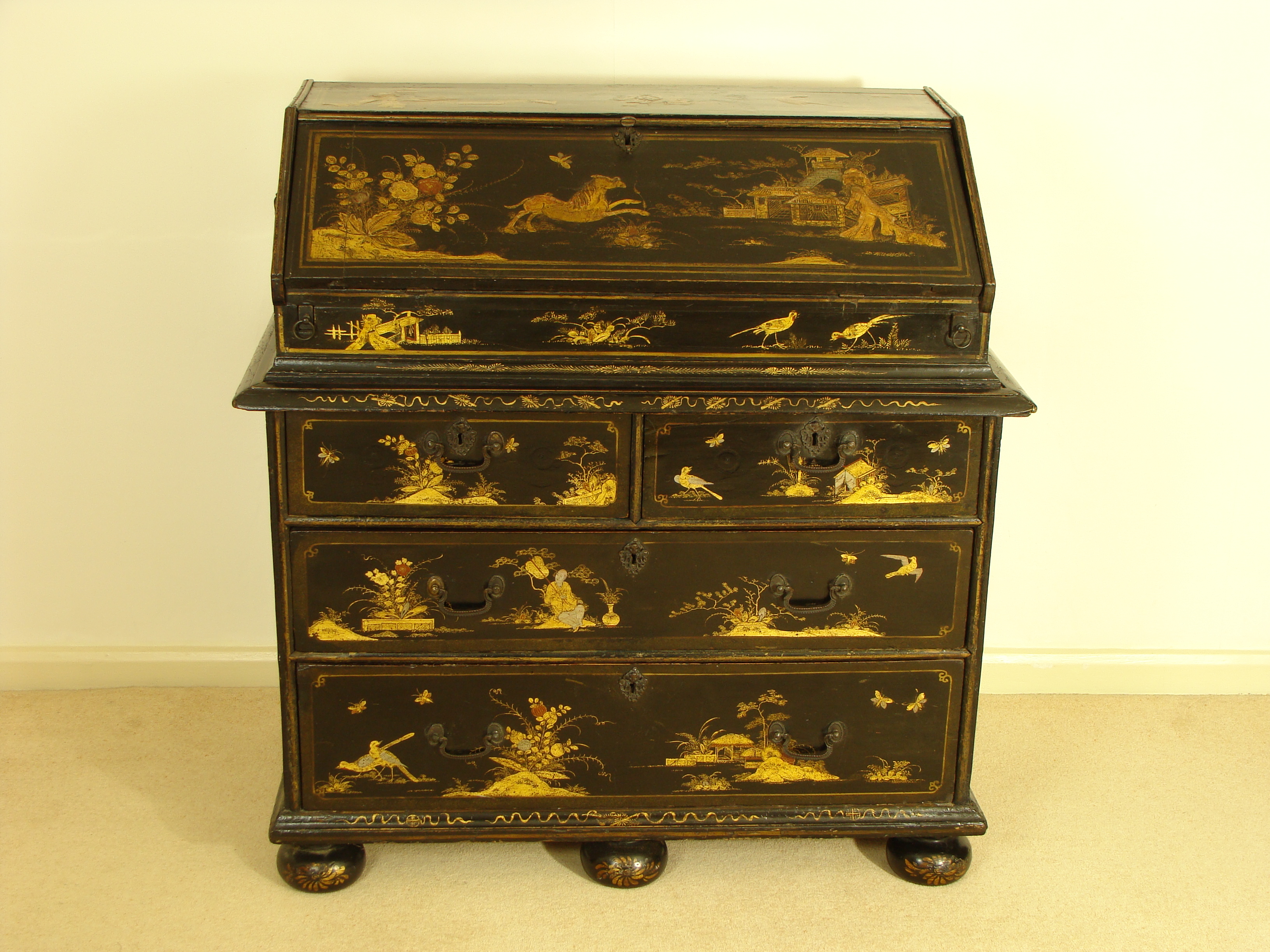
Well into the 18th century the secretaire appeared – a chest incorporating a fitted writing section concealed within a drawer.
[/fusion_builder_column][fusion_builder_column type=”1_1″ background_position=”left top” background_color=”” border_size=”” border_color=”” border_style=”solid” spacing=”yes” background_image=”” background_repeat=”no-repeat” padding=”” margin_top=”0px” margin_bottom=”0px” class=”” id=”” animation_type=”” animation_speed=”0.3″ animation_direction=”left” hide_on_mobile=”no” center_content=”no” min_height=”none”]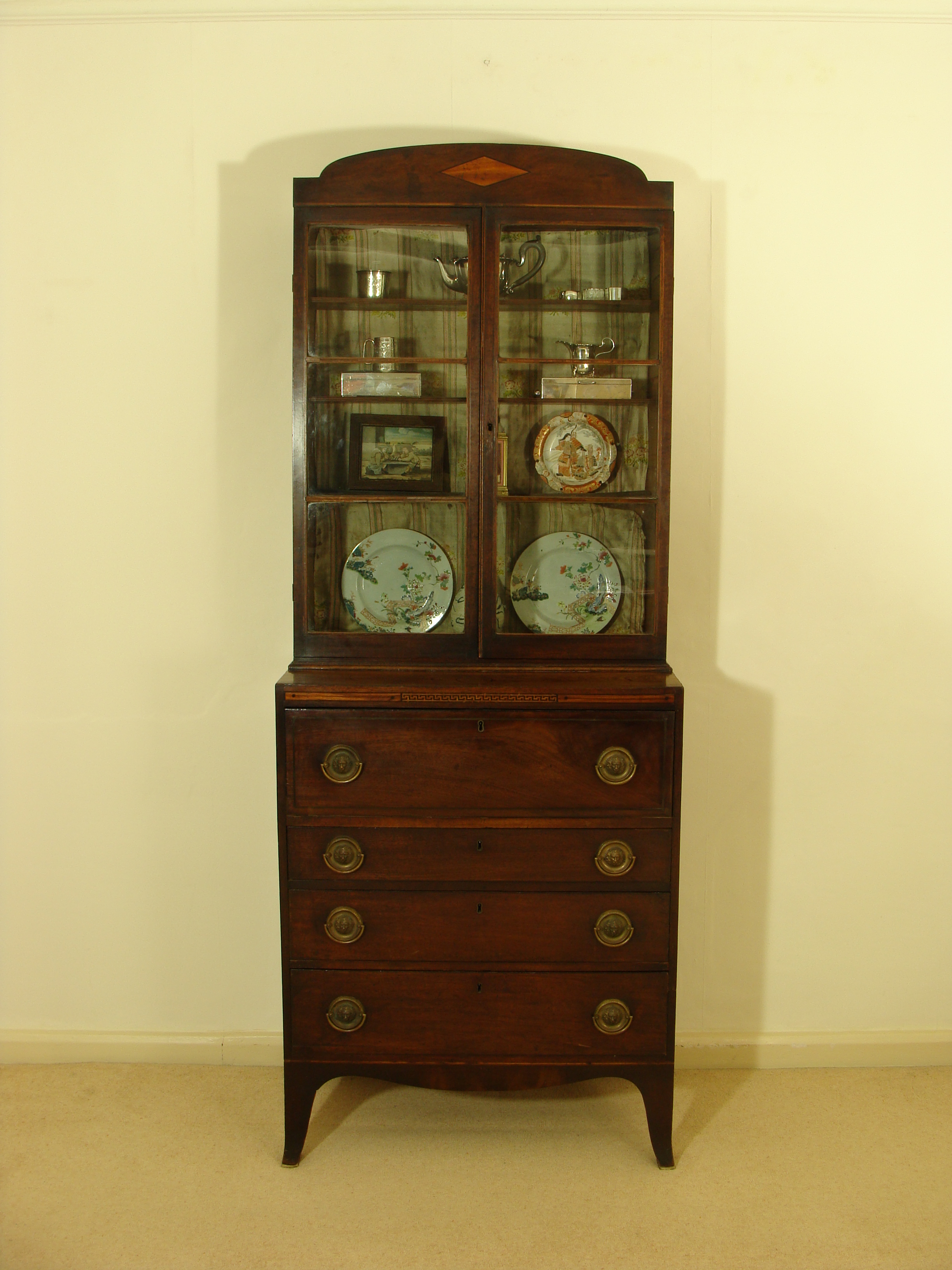
The partner’s desk also evolved, with Chippendale’s workshops producing some magnificent examples. This was the age of mahogany with many different combinations of writing tables and desks appearing.
[/fusion_builder_column][fusion_builder_column type=”1_1″ background_position=”left top” background_color=”” border_size=”” border_color=”” border_style=”solid” spacing=”yes” background_image=”” background_repeat=”no-repeat” padding=”” margin_top=”0px” margin_bottom=”0px” class=”” id=”” animation_type=”” animation_speed=”0.3″ animation_direction=”left” hide_on_mobile=”no” center_content=”no” min_height=”none”]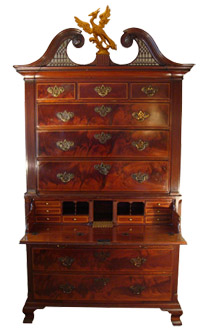
Mahogany Secretaire Tallboy.
‘Revivals’ of all of the above re-appeared throughout the 19th and 20th centuries.
Also bear in mind that evolving styles overlapped, especially in the provinces where the latest ‘town fashions’ took more time to become established. For example, it is possible for a ‘bible box’ to bear a legitimate date of say, 1750. Anything much after that date would be suspect. Later carving of spurious dates was universally practised in the 19th century. As a rule of thumb later carving is usually shallower and less vigorous than period carving. For an example of original carving on oak see below :
[/fusion_builder_column][fusion_builder_column type=”1_1″ background_position=”left top” background_color=”” border_size=”” border_color=”” border_style=”solid” spacing=”yes” background_image=”” background_repeat=”no-repeat” padding=”” margin_top=”0px” margin_bottom=”0px” class=”” id=”” animation_type=”” animation_speed=”0.3″ animation_direction=”left” hide_on_mobile=”no” center_content=”no” min_height=”none”]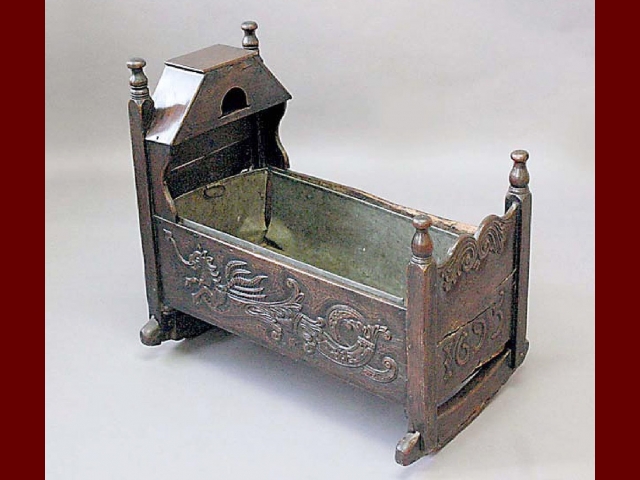
[/fusion_builder_column][/fusion_builder_row][/fusion_builder_container]



